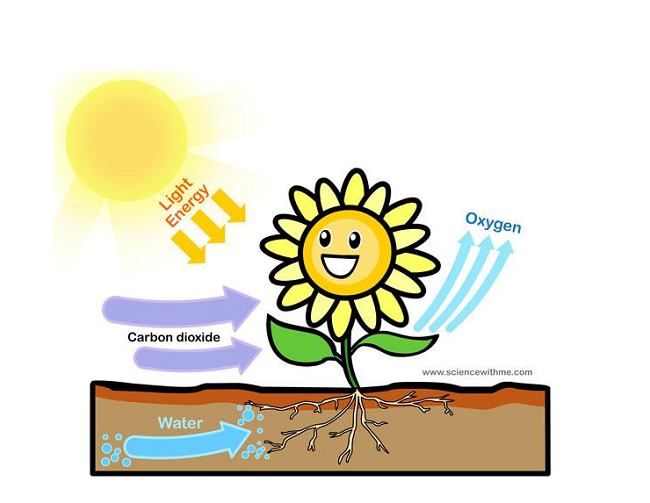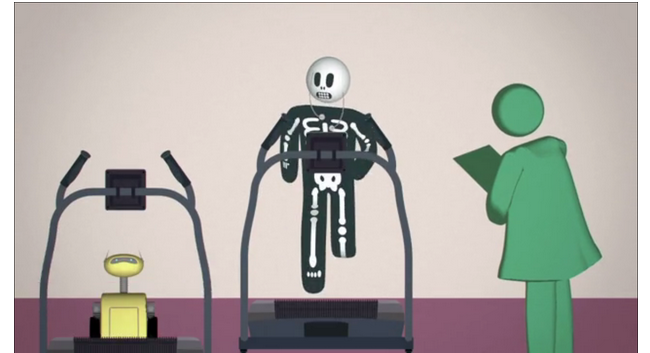So how exactly can animated video be used to facilitate learning? Let’s take a look.
An Engaging Approach
Animated video has been used across a broad range of subjects, to inform and explain. This is often done by creating a memorable story or concept, or by clarifying complicated topics with the use of images, movement, audio and text.
Animations have proven to be particularly useful when something is not easily shown in reality. Intangible phenomena such as virtual clouds can be explained far more clearly with a captivating animated concept.
One of the greatest benefits of animation is that it is exceptionally flexible, versatile,
and does not restrict imagination. The use of a brick wall to symbolise a firewall in a complex explanation of computing can do wonders for teaching the topic and making it memorable.
Animate Any Subject
Science is commonly a difficult subject to teach because many things cannot be shown in real life. When cells are animated, their interaction with each other can be made clear, to make the explanation of a biological process far simpler. Relationships between phenomena can also be shown plainly.

For teaching history, a different approach may be required. You cannot show your class how the Battle of Hastings unfolded in reality, but you can certainly provide an engaging animated representation of key events.
Animation can often be more engaging than live action video, with innovative images often making them more memorable, too. Dynamic content, such as changes over time, can be effectively represented with an animated video. The key moments in a historic timeline can be shown, as can the monthly workings of the female reproductive system.
A Support Tool
Animated video is rarely used as a sole medium for teaching, but as a support tool for other teaching methods, it is highly useful. It’s also handy for explaining more tedious or complex topics, or providing a memorable summary. Animation can increase motivation and satisfaction levels in learning, provided that students’ previous level of understanding is considered. For some topics, sufficient background knowledge may be necessary for maximum benefits to be achieved
You may include a series of short videos to cover a topic, perhaps with each one summing up a module at the end of that part of the course. Common characters in each video can make the learning experience more continuous and provide a stable platform for learning. Even one short video can be enough to involve your class in an animated concept or story and inspire them. This can increase their memory of lessons learned significantly. The animated characters and images that students become familiar with can then be transferred across other teaching material to provide further consistency.
Animated Agents
The use of characters – also known as animated agents – to present topics, monitor student progress and provide feedback has grown, particularly online.

These agents – which can be of any shape or form, from lifelike people to quirky aliens – can ensure continued familiarity throughout an entire course. This is particularly useful when classes are large and teachers are not always on hand for every student. A familiar and engaging animated agent can provide a crutch that keeps pupils on track and motivated.
In Class or Online
One of the fantastic advantages of animation in teaching is that it is an engaging method that can be embraced for any subject and from any location. Whether working in class, in the library or at home, if a student has access to effective animated videos they can be motivated to learn and improve. This also allows them flexibility to progress at their own pace.
In addition to facilitating independent learning, animations provide a pleasant and calm environment in which to learn. The overall educational experience can be made more agreeable on various levels.
No Age Limit for Animation
There is no age barrier for the use of animated video – it can be used right from toddlers, across primary and secondary school, across to adulthood. The rising number of popular animated TV series for adults indicates that this is a medium that can be just as appealing to the oldest of your students as it is to younger children.
Different approaches can be taken for each age group; although, using similar approaches can be efficient too, as this can stimulate memory of something learned in previous years. Those animated images with accompanying music, narratives and sound effects can be incredibly powerful. They stimulate various senses and parts of our minds all at once. This means they are not only pleasant to watch, but can trigger memory and positive associations in future.
Appeal to All Learning Types
The multi-sensory aspect of animation also makes it appealing to a broad range of learning types. Almost all gaps in teaching could be closed with this captivating tool. Well designed, effectively implemented animated videos that are supported by other teaching tools have great potential to motivate and enhance learning potential for students across the board.
Animation is being used to teach in ways that were not previously possible, and its potential continues to develop. Now is as good a time as any to embrace this innovative tool, ride the wave of progress and watch as your students thrive.
Image Credit: Flickr
Have you used animation in your classroom? Tell us about it in the comments.


















